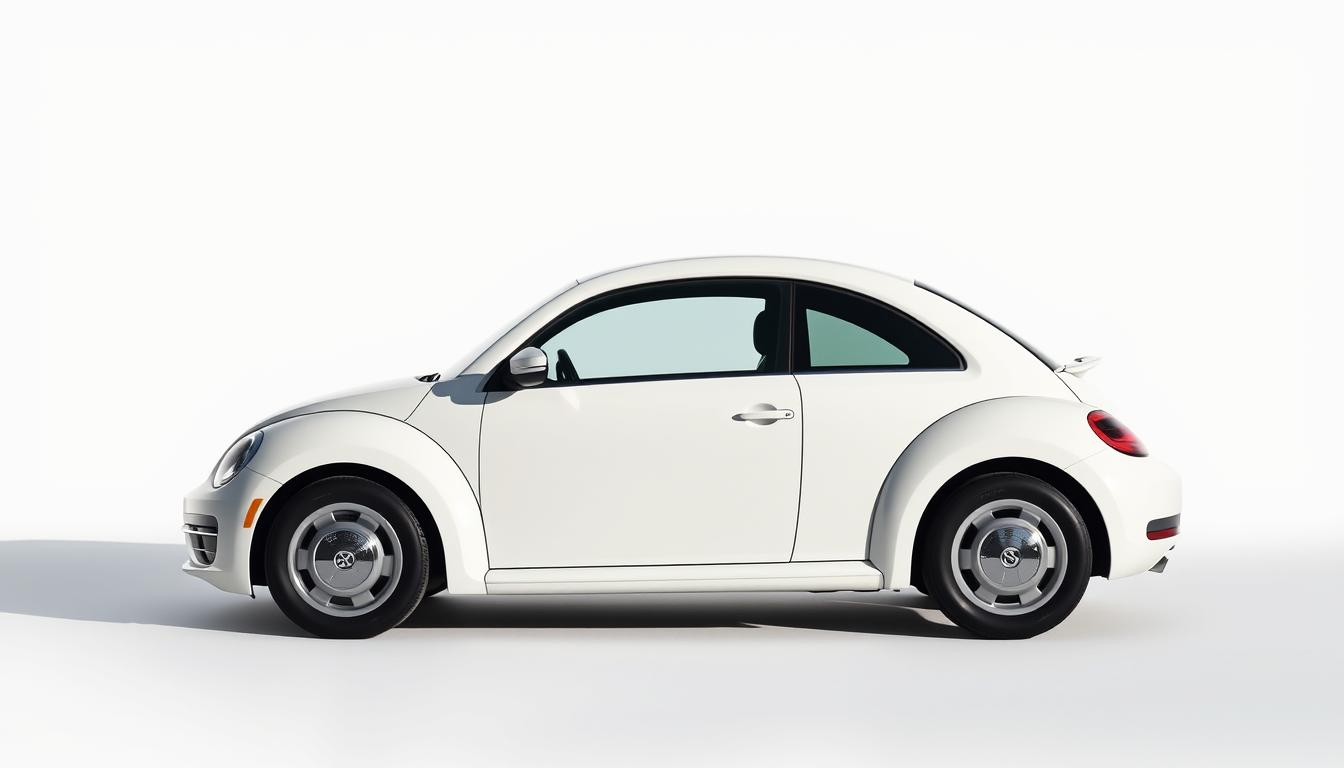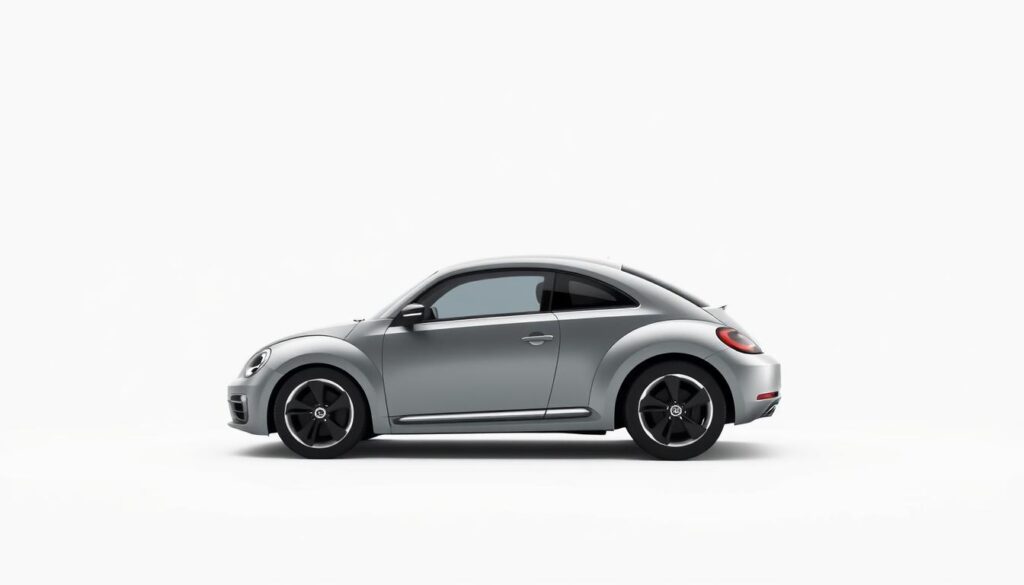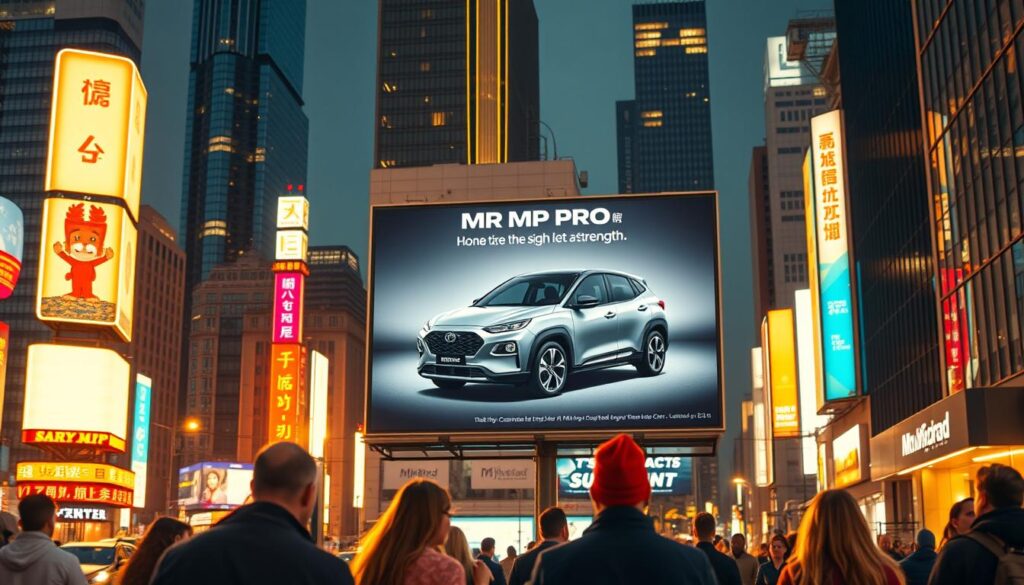
In 1959, the automotive world witnessed a groundbreaking moment when the Volkswagen Beetle became the best-selling car of all time, with over 21.5 million units produced by 2003. This achievement was not just a matter of luck but the result of a bold advertising strategy that flipped the script on traditional car marketing.
At a time when bigger was considered better, the Beetle stood out as a compact, efficient option. The “Think Small” campaign, led by the creative vision of Helmut Krone and Julian Koenig at DDB, revolutionized advertising by turning the car’s small size into its biggest asset. This campaign didn’t just sell a car—it redefined how people thought about size, simplicity, and value.
The campaign’s minimalist design, featuring plenty of white space and a small, angled image of the Beetle, was a stark contrast to the colorful, cluttered ads of the time. The bold headline “Think Small” was more than just a slogan—it was a philosophy that resonated with a generation looking for practicality and honesty in advertising.
This creative revolution not only changed how cars were marketed but also set a new standard for simplicity and clarity in advertising. By focusing on the Beetle’s reliability and affordability, Volkswagen created a campaign that spoke directly to consumers’ needs, proving that sometimes, the smallest ideas can have the biggest impact.
Overview of the Volkswagen Think Small Campaign
In the late 1950s, the United States experienced a surge in consumer culture, with larger cars dominating the market. However, this trend posed a challenge for importing smaller, foreign vehicles. Enter the Volkswagen Beetle, a car built in Germany that would soon capture America’s attention through a revolutionary advertising strategy.
Background and Historical Context
Post-World War II sentiments in the U.S. were less than welcoming to German products. Yet, Doyle Dane Bernbach (DDB) saw an opportunity. They introduced a campaign that flipped the script on traditional car advertising by emphasizing simplicity and honesty. This approach resonated with consumers seeking practicality.
Campaign Origins and Initial Reception
The “Think Small” campaign, led by Bill Bernbach, Helmut Krone, and Julian Koenig, debuted in 1959. It featured minimalist print ads with ample white space, a bold sans-serif font, and a small, angled image of the Beetle. This stark design contrasted sharply with the colorful, cluttered ads of the time, making it an instant hit.
The campaign’s success was evident as sales figures rose, and the Beetle became an American icon. Its impact extended beyond the automotive industry, influencing advertising standards and consumer perceptions.
For more insights into how innovative strategies can transform your brand, visit our services page.
Campaign Execution and Creative Strategy
The execution of this groundbreaking campaign was a masterclass in creativity. By breaking away from the conventional focus on luxury and excess in automobile advertising, the agency introduced a fresh perspective that captivated audiences.
Minimalist Design Philosophy
The campaign’s design was a bold departure from the cluttered ads of the time. It featured a unique sans-serif font and ample white space, creating a clean and focused visual experience. At the heart of this design was a simple, yet compelling image of the Beetle, placed at an angle to draw the eye. This minimalist approach not only highlighted the car’s compact size but also conveyed a sense of honesty and simplicity.

The layout was unconventional, with text arranged in a way that embraced imperfections like widows and orphans, adding a touch of authenticity to the design. This intentional simplicity became a hallmark of the campaign, setting a new standard for clarity in advertising.
Innovative Copywriting Techniques
The copywriting was equally innovative, using self-deprecating humor to address the Beetle’s smaller size head-on. Phrases like “It’s ugly, but it gets you there” charmed audiences with their honesty. The use of a full stop in the headline added a quirky touch, while the expressive copy reinforced the car’s practicality and reliability.
This approach combined traditional elements with radical new ideas, harmonizing art and copy to emphasize simplicity and honesty. The result was a campaign that not only sold cars but also redefined advertising standards, leaving a lasting influence on the industry.
For more insights into how innovative strategies can transform your brand, visit our services page.
Impact on the Advertising Industry
The “Think Small” campaign marked a significant shift in advertising strategies, proving that simplicity and honesty could resonate more with consumers than elaborate designs. By focusing on the car’s compact size as a strength, the campaign redefined industry norms and set a new benchmark for clarity in advertising.
Revolutionizing Print and Media Advertising
The campaign’s minimalist approach, featuring ample white space and straightforward messaging, stood out in a market dominated by cluttered ads. This clean design not only highlighted the car’s features but also conveyed a sense of reliability and practicality, appealing to a broad audience.

The success of the campaign was evident in its sales growth, with over 120,000 cars sold in the U.S. by 1960. This success demonstrated the effectiveness of simple, honest advertising, influencing future marketing strategies across various industries.
Long-Term Influence on Modern Marketing
The campaign’s legacy endures, with its principles of clear communication and intelligent humor shaping modern advertising. By focusing on consumer needs and perceptions, the “Think Small” campaign established a foundation for future innovations in marketing, emphasizing creativity and consumer focus.
Lessons in Innovation: From Volkswagen to Social Media
Innovation often lies in simplicity, a lesson Volkswagen taught the world with its “Think Small” campaign. Today, this principle continues to shape digital platforms, where user experience and design play pivotal roles in success or failure.
Myspace’s Failure to Innovate: Poor User Experience and Bad Acquisitions
Myspace, once a leading social network, offers a cautionary tale. Its cluttered design and poor user experience led to its decline. The platform became overwhelming with features, contrasting sharply with the minimalistic approach that made Volkswagen’s campaign successful. Myspace’s acquisitions, like the ill-fated purchase of imeem, further diluted its focus, highlighting the risks of misaligned strategic moves.
Facebook’s Rise to Dominance Through Simplicity
Facebook’s ascent, on the other hand, mirrors Volkswagen’s strategic clarity. Mark Zuckerberg’s emphasis on a clean, intuitive design resonated with users. By prioritizing simplicity and user experience, Facebook created a platform that was both accessible and engaging, much like how Volkswagen positioned the Beetle as a reliable, easy-to-own car.
| Platform | Design Approach | Strategic Focus |
|---|---|---|
| Myspace | Cluttered, complex interface | Misaligned acquisitions |
| Minimalist, user-centric design | Strategic simplicity |
“The biggest risk is not taking any risk…” – Mark Zuckerberg
As the digital world evolves, the lessons from Volkswagen and these social media giants remain relevant. Simplicity, honesty, and a clear idea are as crucial today as they were in the 1950s. Businesses must learn from these examples to thrive in an ever-competitive market.

For deeper insights into failed social networks and their lessons, explore our case study on Google’s social missteps.
Timeline Challenge: Spot the Turning Points
Can you identify the pivotal moments that shaped the Volkswagen Think Small campaign? Let’s explore the key milestones and consider how different choices might have altered its course.
Key Milestones in the Volkswagen Campaign
The campaign began in 1959 with a bold, minimalist design that stood out in a crowded market. By 1960, the Beetle’s popularity soared, selling over 120,000 units in the U.S. The “Lemon” ad in 1961 introduced self-deprecating humor, further endearing the brand to consumers.
| Year | Event | Impact |
|---|---|---|
| 1959 | Campaign Launch | Revolutionized car advertising with minimalist design. |
| 1960 | Sales Surge | Over 120,000 units sold in the U.S., establishing the Beetle as a cultural icon. |
| 1961 | “Lemon” Ad | Used humor to address the car’s size, enhancing brand honesty. |
Opportunities Where Change Could Have Made a Difference
Imagine if the campaign had expanded internationally sooner or embraced color ads earlier. These shifts might have accelerated its global success and enhanced visual appeal, respectively.

Learn more about refining your marketing strategy on our SEO services page.
In-Depth Analysis of the Volkswagen Think Small Campaign
The “Think Small” campaign, launched in 1959, revolutionized advertising by transforming the Beetle’s compact size into a unique selling point. This section delves into the elements that made the campaign a milestone and evaluates its alignment with consumer insights.
Defining Elements That Made the Campaign Stand Out
The campaign’s success hinged on several innovative elements. The headline “Think Small” was bold and memorable, encapsulating the campaign’s philosophy. The copy was clever, using self-deprecating humor to address the car’s size, which charmed audiences with its honesty.
The image of the Beetle, placed at an angle, drew attention and emphasized its compact design. Ample white space in the ads created a clean, focused visual experience, contrasting sharply with the cluttered designs of the time. This minimalist approach highlighted the car’s design and conveyed simplicity and honesty.

Evaluating the Strategy Against Consumer Insights
The campaign’s strategy aligned perfectly with consumer insights of the late 1950s. At a time when larger cars dominated the market, the Beetle’s emphasis on practicality and efficiency resonated with consumers seeking value and reliability. The use of space in the ads mirrored the car’s compact nature, reinforcing its strengths.
The campaign’s honest and revolutionary approach was validated by its success. Sales surged, and the Beetle became an icon, proving that simplicity and clarity in advertising could have a profound impact. This strategy not only sold cars but also redefined industry norms, leaving a lasting legacy in advertising.
| Element | Contribution to Success |
|---|---|
| Headline | Memorable and encapsulated the campaign’s philosophy |
| Copy | Clever, humorous, and honest |
| Image Placement | Highlighted the car’s compact size effectively |
| White Space | Created a clean, focused visual experience |
The “Think Small” campaign’s influence extends beyond its time, offering lessons in simplicity and honesty that remain relevant in today’s advertising landscape. For more insights into innovative advertising strategies, visit our services page.
Conclusion
The “Think Small” campaign remains a landmark in advertising history, proving that simplicity and honesty can be powerful tools in reshaping consumer perceptions. By turning the car’s compact size into a strength, Helmut Krone and his team at DDB transformed a potential weakness into a unique selling point. This approach not only revolutionized car marketing but also set a new standard for clarity and creativity in the advertising industry.
The campaign’s minimalist design, featuring ample white space and a bold headline, stood out in a crowded market. Its success was evident in the surge of Beetle sales in the United States, with over 120,000 units sold by 1960. The use of self-deprecating humor and a focus on practicality resonated with consumers, making the Beetle an iconic symbol of reliability and efficiency.
Today, the lessons from this campaign remain relevant. Simplicity, creativity, and a focus on consumer needs continue to influence modern advertising strategies. Whether in traditional print ads or digital marketing, the principles of the “Think Small” campaign remind us that sometimes, the simplest ideas can have the most profound impact.

 Volkswagen Think Small: Turning the Beetle’s Size Into a Strength
Volkswagen Think Small: Turning the Beetle’s Size Into a Strength
0 Comment